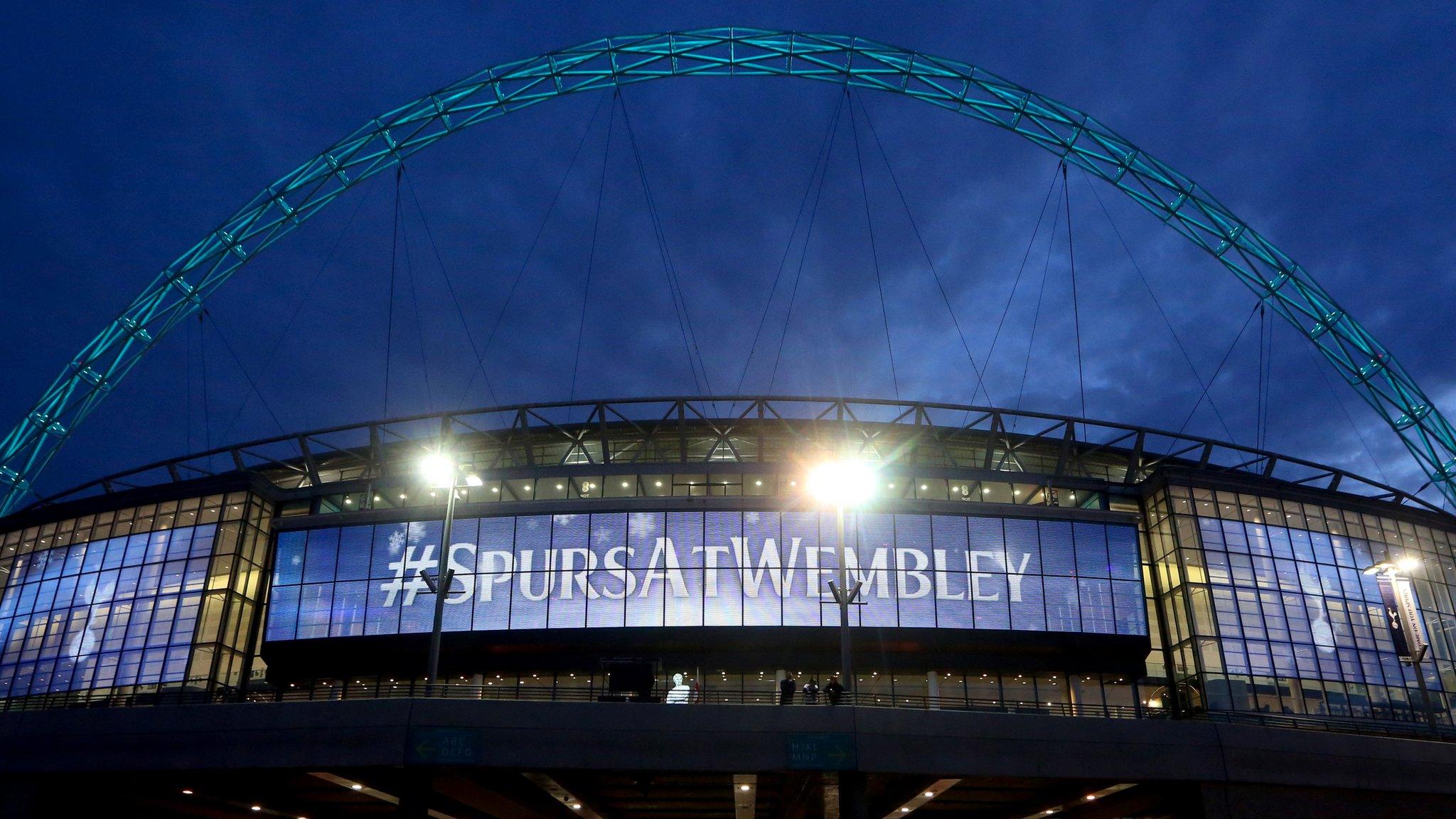Tottenham's White Hart Lane farewell: Saying goodbye to your old ground...
- Published
- comments
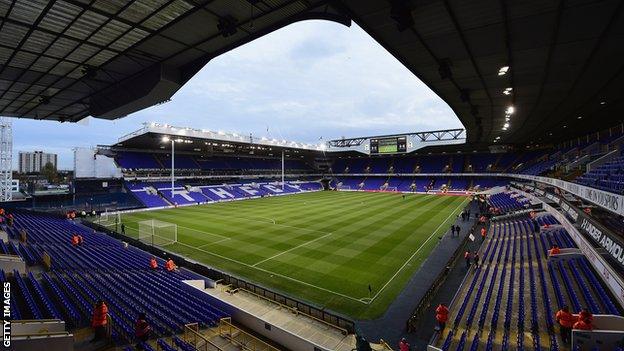
The end of an era: White Hart Lane will host a Tottenham match for the final time on Sunday
You don't forget your first visit to your team's home stadium: how green the pitch looks, how big the stands seem, how tall everyone in front of you is. The noise, the suddenness of it. The speed of the football, the soft touch of the star names, the swearing.
And you don't forget your last, all those seasons of hope and frustration later, when your club upgrades to something altogether cleaner and smarter and more comfortable, and it is time to say goodbye to it all - cramped concourses, tight seating, reeking toilets and the cheap temporary fixes, all of it held together by old memories and faded promises, a shared past that binds you to friends and strangers alike.
You know when it is time to move on. Stadiums age just like the players and tactics they house. Stairs are too steep, sight-lines compromised. Stands that once felt huge and light and imposing begin to feel weary and archaic.
When Spurs play their final match at White Hart Lane on Sunday, the logic of their move to a 61,559-seat grand design built across much of the same site will be inescapable. So too will the sadness for an old home shortly to be reduced to rubble.
Football grounds should feel prosaic. The cheaper part of town, steel and grey concrete, painted wood and moulded plastic. A space that is empty and unused most days of the year.
And then, for a few hours every couple of weeks, like nowhere else you ever go - shouting like you can't shout anywhere else, feeling both totally immersed yet horribly powerless, singing in unison with people whose names you will never know.
Spurs have been at White Hart Lane for 118 years. Much of the ground, which now holds 36,240 fans, is unrecognisable to that history. The Shelf is long gone, the Paxton Road end transformed, even the new West Stand that once seemed so vast and modern in the 1980s, as you came in on the train or along the High Road, now a little tired and outdated.
Supporters can still look out at that rectangle of grass and know that was the stage where so many unforgettable moments played out. They can picture where, before their time, the great players ran and great goals were scored in glory games.
That pitch is the living connection to it all: where the league titles of 1951 and 1961 were finally won, both against Sheffield Wednesday; the left wing where Gareth Bale tortured Inter Milan's Maicon in November 2010; the goalmouth where Tony Parks saved a penalty from Anderlecht's Arnor Gudjohnsen to win the Uefa Cup final in 1984. The penalty boxes where Steve Perryman scored twice against AC Milan in the semi-final of the 1972 Uefa Cup; the little patch where Terry Dyson played a one-two with Danny Blanchflower before lashing in his third goal against Arsenal in August 1961.
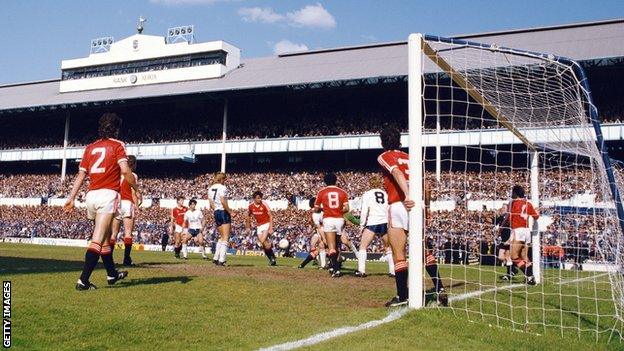
The past: The famous Shelf is packed out as Tottenham host Manchester United in May 1984
There are the hauntings, too - Arsenal's 5-0 win at Christmas 1978, Manchester United scoring five in one half past Neil Sullivan as Spurs surrendered a 3-0 half-time lead in September 2001, being 3-0 up against a 10-man Manchester City in the FA Cup in 2004 and somehow losing 4-3.
And there are the sacred ghosts to go with them: the artists like John White, Cliff Jones and Jimmy Greaves, the entertainers like Chris Waddle, Paul Gascoigne and Jurgen Klinsmann, the tough nuts like Ted Ditchburn, Dave Mackay and Graham Roberts.
"Every supporter will tell you this about their own ground, but it's the memories you build up from when you're a kid," says Dave Bricknell, who has had season tickets on the Shelf, Paxton Road and now Park Lane over the past 40 years, and who as a coach up the road in Chingford 18 years ago picked a six-year-old kid called Harry Kane for the youth team he ran, Ridgeway Rovers.
"My first game was a home match against Millwall, League Cup, 1972. A night game, loud. My mate's dad picked me up. He'd built his son a little box so he could stand at the front and see. In the corner you had the bloke at half-time manually putting the scores on from the other matches.
"It's those memories, and it's the things you do now - parking at the same place, walking the same way. A lot of people have moved away from Tottenham, and the only time they come back now is for the game.
"It's the part when you walk into the ground, you've got all the terrace above you, and you look forward and the ground opens up around you. To me, that is it. That is the best part of the game, because it takes you back to your childhood.
"Over the years there have been some really bad games. Games when you think, why do I keep coming over here? But you do go back. And every supporter of every club will tell you the same thing. We all think our home ground is special."
Spurs will make Wembley their temporary home next season, before moving in to their new stadium - which is expected to set them back £750m.
They have left their house move late compared to their neighbours. Arsenal departed Highbury's marble halls and Art Deco facades in 2006, West Ham the partisan, claustrophobic Upton Park a year ago. Of the football stadia in London also designed by the great football architect Archibald Leitch, only Fulham's Craven Cottage remains recognisable.
It was Leitch's East Stand that sheltered arguably the most iconic single element of White Hart Lane, the long stretch of terrace down the side of the pitch known as the Shelf. As the North Bank defined Highbury, as the old terraced Kop did Anfield, the Gallowgate End St James's Park and the Holte End Villa Park, the Shelf was what set the ground apart: its tribal heart, its noisy soul.
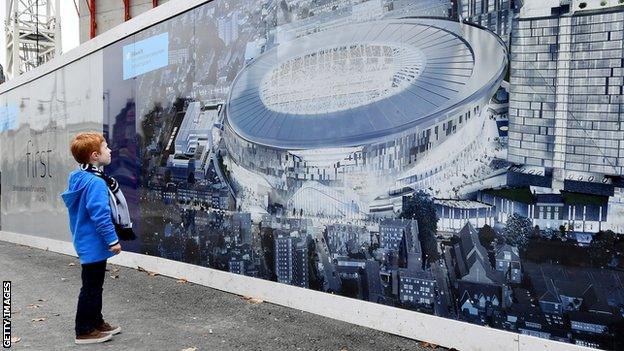
The future: A young Tottenham fan and the ground the club will soon call home
"People won't believe it, but in that 1984 season I went to White Hart Lane most midweeks," says former Chelsea, Everton and Scotland winger Pat Nevin.
"I was actually Chelsea's player of the year at the time, but I was standing on the Shelf, watching Spurs. If you've got Ossie Ardiles, if you've got Glenn Hoddle, if you've got the likes of Micky Hazard - they were brilliant players in that team, and I was really keen to watch those players and learn what I could.
"White Hart Lane was a brilliant place to play, because the supporters were so close to you. The atmosphere was always great. It's a small pitch, but because Spurs were almost always an attacking side, it was almost like an elongated five-a-side game. I loved playing at that ground."
For Tottenham's own guard the memories are more vivid still.
"When I was there you would regularly get 60,000 for a match," former club captain Alan Mullery told BBC Sport. "When we won the Uefa Cup in 1972, beating Wolves, the last match I ever played, and I scored the winning goal. I remember every minute of it."
Thirteen years later, Spurs would win the same tournament on the same pitch, 21-year-old Parks' two penalty saves in the shootout and all.
"We went out to an old building on the High Road that had a balcony, and the whole of the High Road was full of thousands of Spurs fans," remembers Gary Mabbutt, early, that night, in a Spurs career that would see him captain the club for more than a decade. "118 years of tradition and history, all embedded in White Hart Lane."
"It's an old cliche, but it's a proper football ground," says Dave Bricknell. "You're packed in. You're right next to the players, you're getting noise from most sides.
"The new stadium is eating the old stadium. It's like playing Pac-Man on a grand scale. You can see three new stands going up, and it looks fantastic.
"It will be bigger, and it will be better, and hopefully we can keep the team together and move on to the next level. You've got to look forward, haven't you?"
You do. But you can also look back, one final time. And when you do, no matter which ground you are saying farewell to, the days and nights that meant so much come alive one more time, as they have this past week for Bricknell.
"Parksey saving those penalties, Roberts stealing in to equalise. The noise!
"Harry scoring against Arsenal last year, fantastic. What a goal… But the other week against Arsenal was pretty special too - beating them 2-0, making sure we stayed above them.
"That 5-3 defeat by United - it was my son's birthday. One of his first games. The City loss was worse. It was Man Utd in the next round, so at half-time we were all looking at booking flights up to Manchester. Liam Brady smashing one into the top corner in that 5-0 in '78…
"Beating Arsenal 5-0 and Mark Falco scoring a volley from the edge of the box with his right foot, Terry Gibson crossing it, Chris Hughton scoring another belter in that match… beating Feyenoord 4-2 under the lights, with Cruyff in their team and saying before the match that Hoddle wasn't all that good and he was going to show it, and Hoddle absolutely destroying them…
"It's been special. And Sunday will be a very special goodbye."
Home from home: The top-flight teams who moved
- Published12 May 2017
- Published14 May 2017
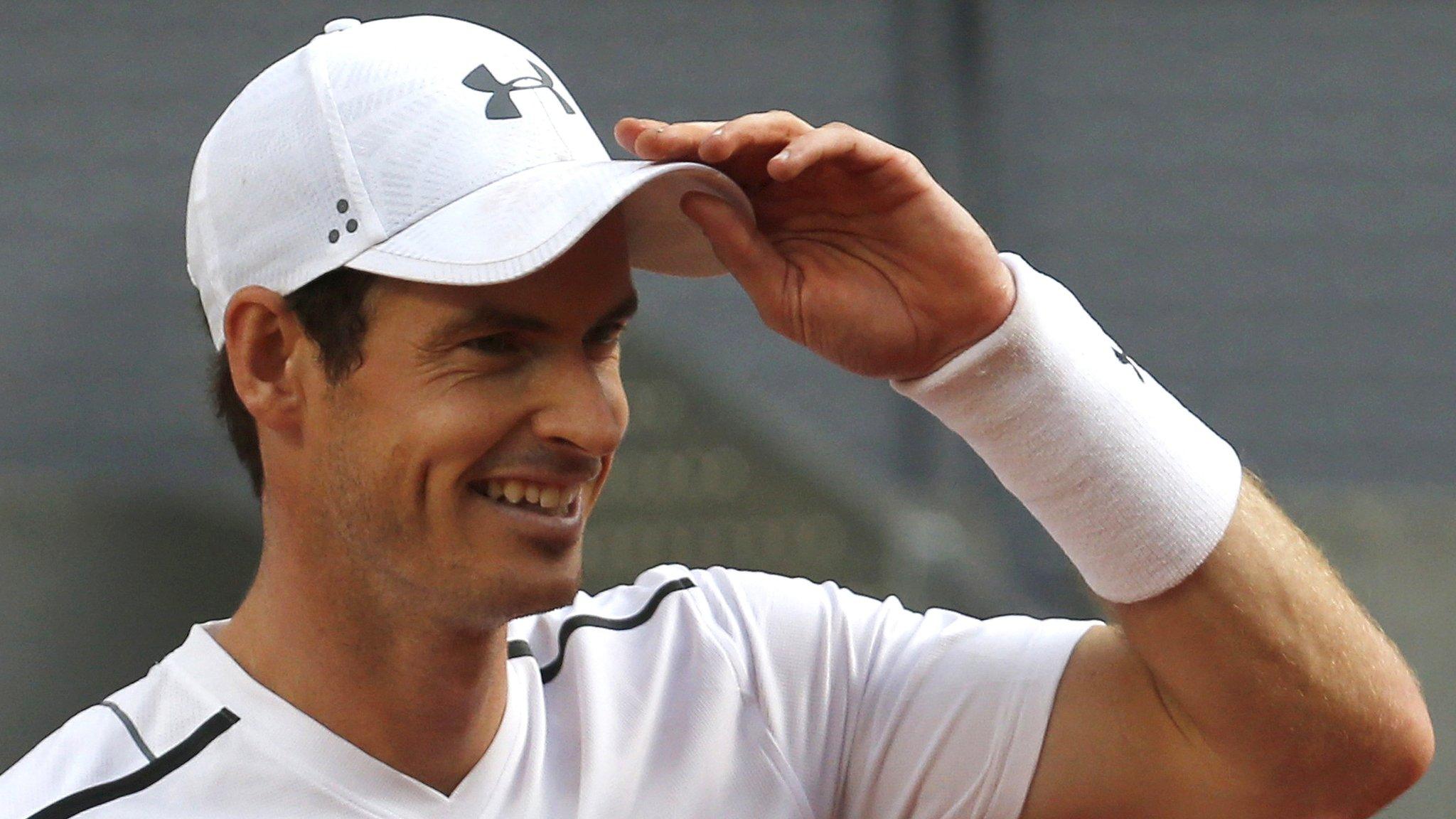
- Published28 April 2017
